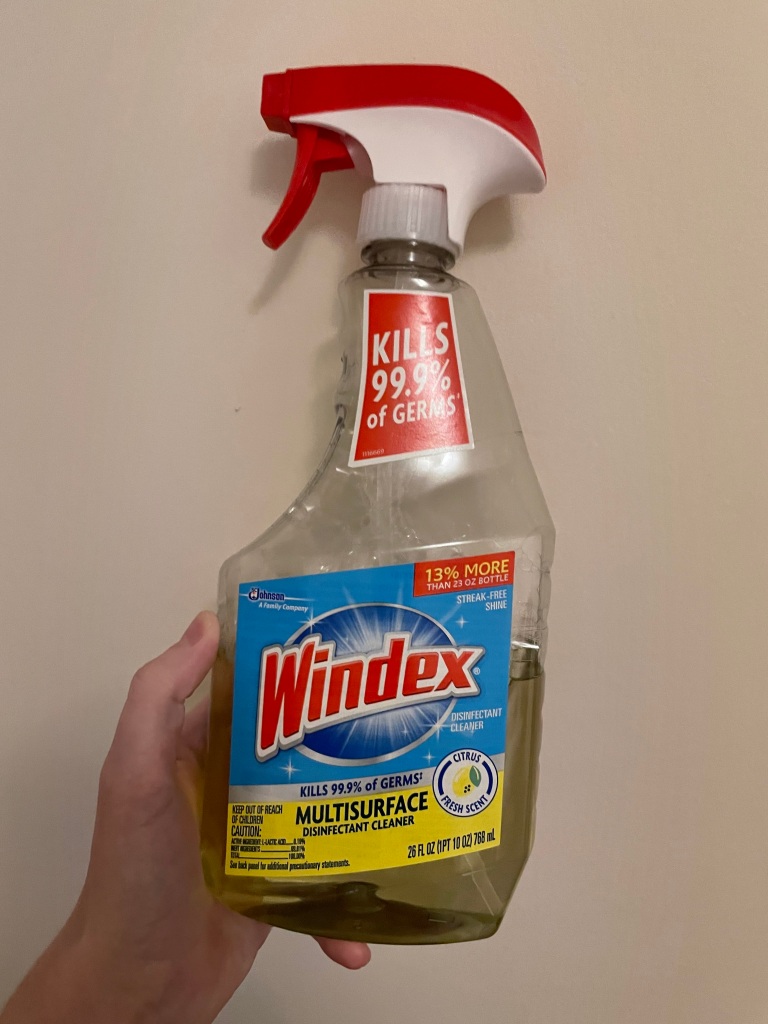One common cleaner that I use in my house is windex. One 26 fluid ounce bottle costs $3.17. Windex is a multi-surface disinfectant cleaner. The active ingredient listed is L-Lactic acid and makes up 0.19% of the solution. The FDA has recognized L-Lactic acid as a safe antimicrobial product, however, it can be a skin irritant due to its low pH. According to the instructions on the back, in order to actually disinfect with Windex, you must soak the surface and let it sit for ten minutes before wiping. Thus, I have simply been sanitizing with this product.

One alternative to using store bought products, it to make your own antimicrobial cleaners. One recipe I found suggests using three cups of water, a half cup of white vinegar, and ten drops of lavender essential oil. The active ingredient in this mixture comes from the white vinegar and is acetic acid. Acetic acid is an effective disinfectant and can kill bacteria. One advantage to this method is that it is cheaper than name brand cleaning products. However, one drawback is that it is more time consuming to mix your own products.
Before taking this class, I only used name brand cleaning products. Due to marketing strategies such as advertisements that suggest the product kills 99.9% of bacteria, I was led to believe that these name brand products were the most effective cleaners. However, after learning about chemical methods of microbial growth control, I have a better understanding of what ingredients actually kill microbes. Due to this knowledge, I would not be uncomfortable using DIY cleaners as opposed to name brand products. Despite potentially having to mix these products by hand, one major benefit to this method would be the reduced cost of cleaning. Further, I would be more confident that the microbes have actually been reduced.